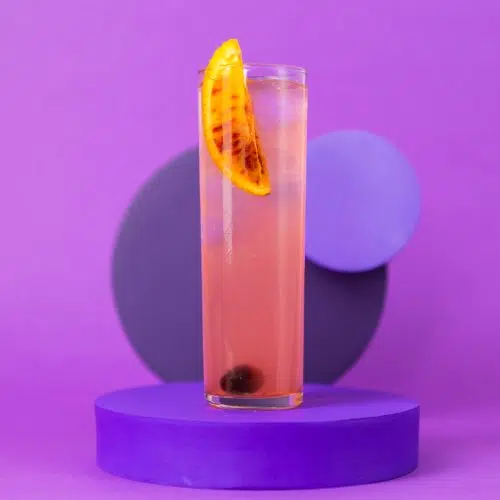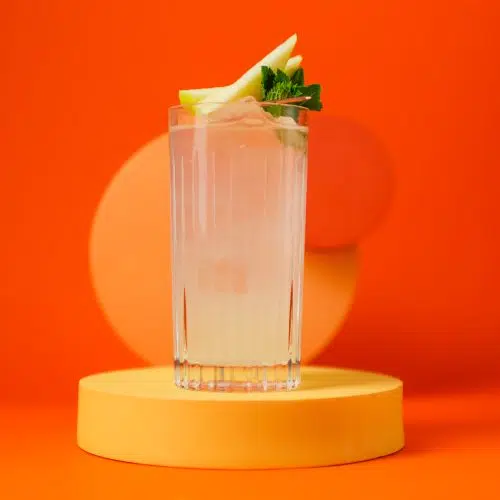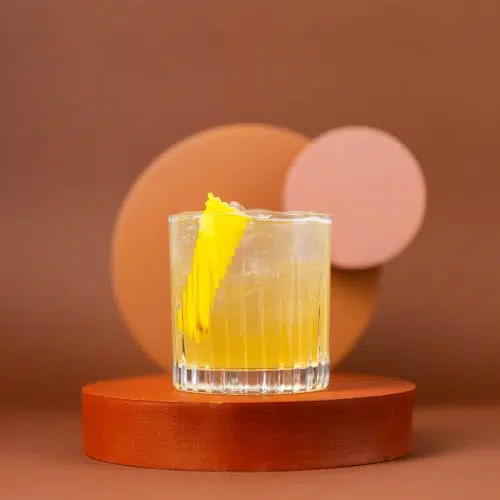
Combining Champagne, a hint of sugar, and dashes of bitters is a classic choice for any classy event.
Prep time:
1 minute minute
Mixing time:
1 minute minute
Servings:
1
Calories:
94
Ingredients
- 1 sugar cube
- 2-3 dashes Angostura aromatic bitters
- 5 oz Champagne - chilled
- Lemon twist - for garnish, optional
Equipment
- Champagne Flute
- Measuring Spoon
Instructions
- Prep Flute: Place 1 sugar cube at the bottom of the Champagne flute.
- Add Bitters: Drip 2-3 dashes Angostura aromatic bitters directly onto the sugar cube.
- Pour Champagne: Fill the flute with 5 oz Champagne, allowing the bubbles to dissolve the sugar.
- Garnish: Twist a lemon peel over the drink to release its oils and drop it into the flute.
Notes
Substitutes:
- Sugar Cube: I sometimes use a teaspoon of granulated sugar if I run out of sugar cubes. The experience changes slightly, but the drink remains delightful.
- Angostura Bitters: Orange bitters are a delightful alternative, imparting a unique citrusy flavor profile.
- Champagne: I've used Prosecco or Cava before. While both are sparkling wines, each brings distinct characteristics to the cocktail.
Making a Pitcher of Champagne Cocktail:
- Scale: For a pitcher that serves 8, use 8 sugar cubes, 16-24 dashes of bitters, and about 40 oz (1.2 liters) of Champagne.
- Mix: In the pitcher, combine sugar cubes and bitters. When you're ready to serve, pour the Champagne and stir gently.
- Serve: Distribute the mixture into Champagne flutes, garnish with lemon twists, and serve at once.
Making it Non-Alcoholic:
- Champagne Substitute: Choose a non-alcoholic sparkling wine or a fizzy grape juice. These often capture the bubbly essence without the alcohol.
- Angostura Bitters: infuse simple syrup with gentian root, cardamom and orange peel to replicate the bitterness and the aromas.
- Proceed As Usual: Replace the Champagne with the non-alcoholic alternative and follow the original steps. You'll get a bubbly, non-alcoholic treat!
Making it Vegan:
Good news! The classic Cocktail already fits within a vegan diet. However, always check the labels on store-bought items, especially wines and bitters, as some might use non-vegan ingredients or processing agents. Choose vegan-certified products to be certain.What is a Classic Champagne Cocktail?
Champagne Cocktail is a beverage featuring Champagne, sugar, and bitters. Historians trace its origins to high society gatherings in the 19th century. The name simply and elegantly captures the essence of the drink: a cocktail with the star ingredient being Champagne. The cocktail is considered to be one of the “Contemporary Classics” by the IBA(International Bartender Association) that officially recognizes the drink.
What is a Champagne Cocktail made of – The ingredients
Prepare the following ingredients for your Champagne Cocktail:
- Champagne: The primary component, it provides the bubbliness that defines the cocktail.
- Sugar Cube: Adds a sweetness; it slowly dissolves in the Champagne, creating a gentle fizz.
- Angostura Bitters: These aromatic drops enhance the flavor profile, adding a hint of spice and complexity.
- Lemon Twist (optional): A garnish with a slight citrus aroma, complementing the drink’s overall taste.
















